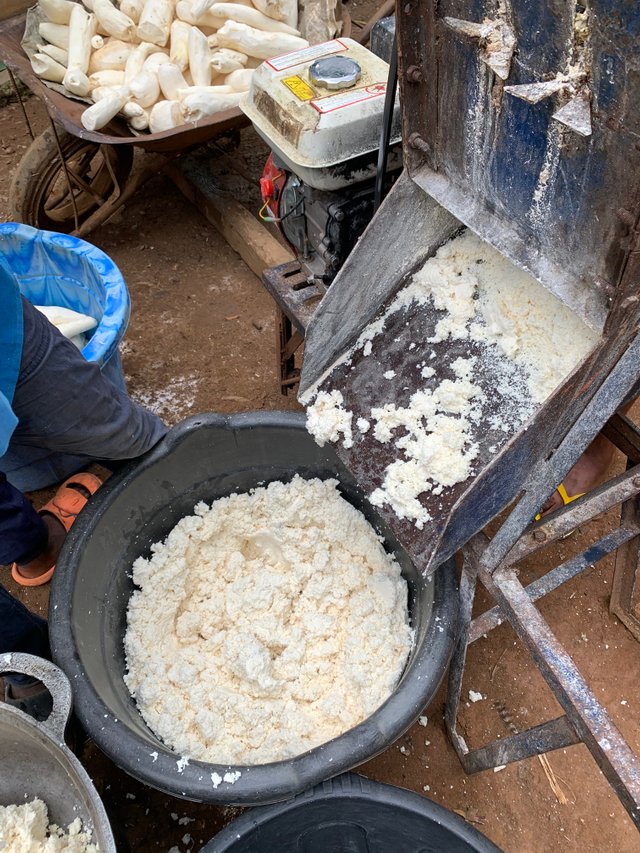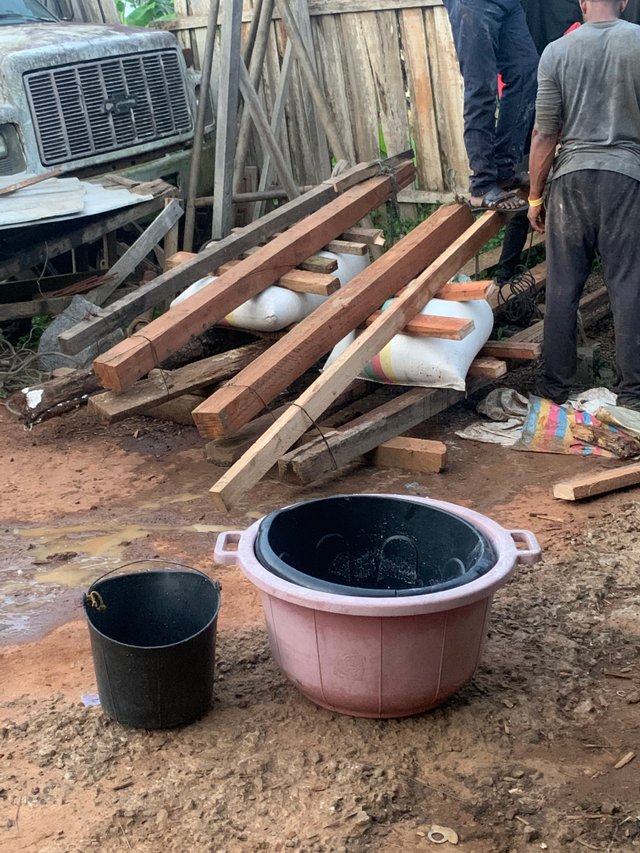Hello, good evening everyone!

I hope your week is off to a great start. Yesterday was quite a hectic day for me. My mom and I went to the farm to harvest cassava, as it was the only day she would be free this week. We left home early and by 8 a.m., we were already at the farm. Mom had mobilized some children to help us.


Typically, cassava is one of the dominate crops here in Djoum and can be harvested and eaten after six months, but this particular one had been in the ground for nearly two years. Thankfully, it had rained the day before, so the soil was softer than usual, making it easier to dig. While I dug up the cassava, my mom focused on peeling it. The cassava was meant to be processed into garri. To save time and effort, we decided to peel the cassava right there on the farm, so we wouldn't have to deal with carrying all the peelings or finding a place to discard them later.

Pulling the cassava from the ground was no easy task—it was one of the hardest things I’ve ever done, haha! We worked in the field until about 2 p.m., digging and peeling non-stop. Mom had hoped we could harvest everything in one day since a good portion of it had already been stolen, but there was just too much to do. We were exhausted, and with the threat of rain looming, we had to stop.
Thankfully, we were able to borrow a truck from a nearby aunt to transport the cassava to the location where it would be washed and ground.


When we arrived, I was surprised to see the machine used for grinding cassava—it wasn’t the large, industrial one I had imagined. Instead, it was a small, portable machine that could be pushed like a wheelbarrow. While the cassava was being ground, I continued peeling the remaining roots, since we hadn’t finished at the farm.



We sat there for about 45 minutes, then called for bags to store the ground cassava. My uncle came with his car to help us transport everything home, as it was far too much to carry by bike. When we arrived home, my other uncle was already waiting for us—Mom had asked him to find sticks and ropes to tie up the cassava.

Normally, once cassava is ground, it’s placed in bags and tightly tied so the water can drain out. This step is crucial because if the water isn’t completely removed, the garri can turn sour. Thankfully, since this cassava had been in the ground for so long, it didn’t have much water left in it. However, if cassava is harvested too early, it contains more water and takes longer to dry out once tied.
After everything was tied up, we finally had a chance to rest. I took a much-needed bath, then helped Mom iron her apron for school before heading to bed. It was a long and tiring day, but very productive
I can tell you had a very busy day. I never knew cassava is cultivated in Cameroon. What intrigued me was the fact that the cassava stayed in the ground for two years. Wow 😲, I have never heard of such before.
I appreciate the fact that you assisted your mom in the farm. It is no easy task.
I hope to see the Garri once it's processed 😂.
Best regards 🤗
Downvoting a post can decrease pending rewards and make it less visible. Common reasons:
Submit
Hahahahaba thank You.Cassava is one of the most dominate crop here in the south.Like every farmer has it in their.Its like cocoa to a south West man.
Downvoting a post can decrease pending rewards and make it less visible. Common reasons:
Submit
I never knew that.
Thanks for letting me know.
Best regards
Downvoting a post can decrease pending rewards and make it less visible. Common reasons:
Submit
Thank You
Downvoting a post can decrease pending rewards and make it less visible. Common reasons:
Submit
Downvoting a post can decrease pending rewards and make it less visible. Common reasons:
Submit
Congratulations on bringing a quality content. You have earned a positive vote from team 2, and it is delivered by @starrchris.
Many Blessings...🙏🏻
Downvoting a post can decrease pending rewards and make it less visible. Common reasons:
Submit
Thank You very much for the Vote.I appreciate.
Downvoting a post can decrease pending rewards and make it less visible. Common reasons:
Submit